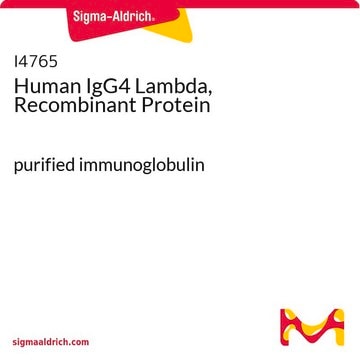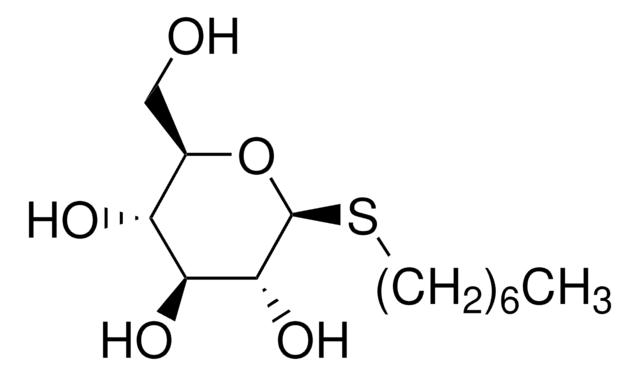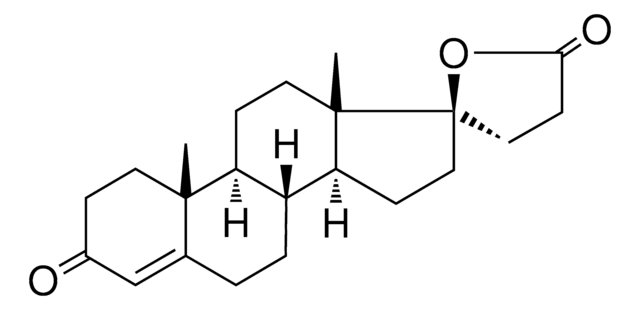14764
1-Deoxy-D-xylulose
≥80% (TLC)
Synonym(s):
(3S,4R)-3,4,5-Trihydroxy-2-pentanone, 1-Deoxy-D-threo-2-pentulose
Sign Into View Organizational & Contract Pricing
All Photos(1)
About This Item
Empirical Formula (Hill Notation):
C5H10O4
CAS Number:
Molecular Weight:
134.13
MDL number:
UNSPSC Code:
12352201
PubChem Substance ID:
NACRES:
NA.25
Recommended Products
Assay
≥80% (TLC)
form
liquid
optical activity
[α]/D +31.0±3.0°, c = 1 in H2O
storage temp.
−20°C
SMILES string
CC(=O)[C@@H](O)[C@H](O)CO
InChI
1S/C5H10O4/c1-3(7)5(9)4(8)2-6/h4-6,8-9H,2H2,1H3/t4-,5-/m1/s1
InChI key
IGUZJYCAXLYZEE-RFZPGFLSSA-N
Biochem/physiol Actions
Metabolite of the non-mevalonate pathway, generally found in prokaryotes, as precursor to isoprenoids as well as non-isoprenoids like vitamins. As this pathway is not present in humans, it is of interest for the development of bacterium-specific drugs in the search for treatments of infectious diseases.
Linkage
In E. coli, 1-deoxy-D-xylulose is converted into 1-deoxy-D-xylulose 5-phosphate by phosphorylation of the C-5 hydroxy group by D-xylulokinase.
Other Notes
To gain a comprehensive understanding of our extensive range of Monosaccharides for your research, we encourage you to visit our Carbohydrates Category page.
Storage Class Code
13 - Non Combustible Solids
WGK
WGK 3
Flash Point(F)
Not applicable
Flash Point(C)
Not applicable
Choose from one of the most recent versions:
Certificates of Analysis (COA)
Lot/Batch Number
Don't see the Right Version?
If you require a particular version, you can look up a specific certificate by the Lot or Batch number.
Already Own This Product?
Find documentation for the products that you have recently purchased in the Document Library.
W Eisenreich et al.
Cellular and molecular life sciences : CMLS, 61(12), 1401-1426 (2004-06-16)
The mevalonate pathway for the biosynthesis of the universal terpenoid precursors, isopentenyl diphosphate (IPP) and dimethylallyl diphosphate (DMAPP), is known in considerable detail. Only recently, the existence of a second mevalonate-independent pathway for the biosynthesis of IPP and DMAPP was
Andréa Hemmerlin et al.
Plant physiology, 142(2), 441-457 (2006-08-22)
Plants are able to integrate exogenous 1-deoxy-D-xylulose (DX) into the 2C-methyl-D-erythritol 4-phosphate pathway, implicated in the biosynthesis of plastidial isoprenoids. Thus, the carbohydrate needs to be phosphorylated into 1-deoxy-D-xylulose 5-phosphate and translocated into plastids, or vice versa. An enzyme capable
Jiaqi Liu et al.
Frontiers in plant science, 8, 2082-2082 (2017-12-23)
As one type of the most important alkaloids in the world, terpenoid indole alkaloids (TIAs) show a wide range of pharmaceutical activities that are beneficial for clinical treatments.
Wanchai De-Eknamkul et al.
Phytochemistry, 62(3), 389-398 (2003-03-07)
A green callus culture of Croton sublyratus Kurz established from the leaf explants appeared to actively synthesize two well-known phytosterols, beta-sitosterol and stigmasterol. The phytosterol biosynthesis was highly active during the linear phase of the culture. Feeding of [1-13C]glucose into
Andréa Hemmerlin et al.
The Journal of biological chemistry, 278(29), 26666-26676 (2003-05-09)
In plants, two pathways are utilized for the synthesis of isopentenyl diphosphate, the universal precursor for isoprenoid biosynthesis. The key enzyme of the cytoplasmic mevalonic acid (MVA) pathway is 3-hydroxy-3-methylglutaryl-coenzyme A reductase (HMGR). Treatment of Tobacco Bright Yellow-2 (TBY-2) cells
Our team of scientists has experience in all areas of research including Life Science, Material Science, Chemical Synthesis, Chromatography, Analytical and many others.
Contact Technical Service








